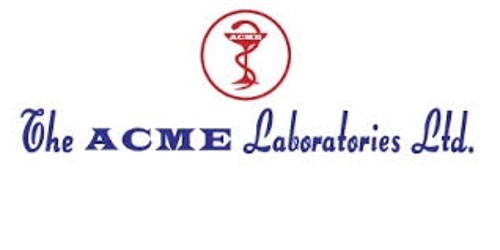BGMEA
Functions & Activities Of BGMEA.
BGMEA is being run by a 27-member elected Board of Directors. Four Vice Presidents having important portfolios, along with a secretariat of experienced officials, assists the Board in formulating and executing vital policies and programs of the organization. The President is the highest executive authority of the BGMEA.
The fundamental objective of BGMEA is to establish a healthy business environment for a close and mutually beneficial relationship between the manufacturers, exporters and importers in the process ensuring a steady growth in the foreign exchange earnings of the country. BGMEA issues UD to its exporters thereby monitors export as well. BGMEA plays a very strong role to lead the industry in concurrence with the government. The following are the regular activities of BGMEA for its members, apparel buyers and other partners.
To Protect and uphold the interest of the industry by aiding the formulation of government policies consistent with a congenial growth of the sector.
Committed to protect the interests of its members and their employees by implementing legitimate rights and privileges for garments workers.
To negotiate and consult with foreign and local agencies to promote the garments sector in every possible fields.
To maintain liaisons with foreign buyers, business associations and chambers.
To provide foreign buyers with all necessary information regarding all issues concerned with the RMG sector.
BGMEA brings the opportunities for local manufacturers to interact with foreign buyers and form new rapport by arranging different apparel fairs at home and abroad.
To keep the BGMEA factories child labor free through continued monitoring.
Continue and expand collaboration with relevant Ministries of the Governments.
Continue educational support to workers’ children and make a provision for skill training for children removed from the BGMEA’s member factories.
Provides information services to its members by publishing monthly newsletters, issuance of circulars and through Dhaka’s first B2B web portal which directly links exporters and buyers around the world.
BGMEA also established its own Institute called “BGMEA Institute of Fashion & Technology (BIFT)” in 1999. Till the day BIFT is continuously developing professionals for this sector through the courses of Fashion Designing and Garment Merchandising; and other certificate, diploma and short courses. Transforming it into University is under process.
Promotes computer oriented solutions for better management to its member units.
Participates actively in all trade negotiations for the sector in order to get easier market access and GSP benefits.
BGMEA’s appointed lobbyist firm has been working to get duty free access in the US market. The New Partnership for Development Act (NPDA)of 2007 was introduced in the US House of Representatives by Congressman McDermott and our lobbyist is working to get the bill passed.
BGMEA has introduced Service Books for each and every workers employed in the factories.
BGMEA is going to launch a workers welfare committee in the factories.
BGMEA has ensured the minimum wage implementation to the tune of 99.49% of all factories.
BMGEA has set up a Crisis Management Committee for emergencies.
BGMEA regularly helps out the victims of natural calamity by providing relief, rehabilitation and other support. BGMEA stood beside the SIDR affected people with huge relief and support. BGMEA also rehabilitated 100 families by establishing a weaver’s village (Taath Palli) in Manikgonj.
BGMEA provides scholarship to meritorious children of the garments workers. Each year 2000 students are getting the scholarships at Dhaka and Chittagong.
BGMEA runs training programs through 27 Technical Training Centers and 3 other centers with the objective of producing skilled workers for the RMG sector. More than 15000 trainees will be shaped up through this program and BGMEA will appoint them in the factories. BGMEA has trained and employed 10,000 people till the date.
BGMEA is in the process of taking over 34 vocational training centers to provide various skill sets to the unemployed.
BGMEA regularly conducts fire drills and fire safety program at the member factories. Although 18 fire incidents took place in 2007 and 2008, there were no casualties.
BGMEA runs 10 medical centers for its workers and provides HIV/AIDS awareness. Around 4.5 million workers have already received medical treatment and 55,000 workers have been made aware of HIV/AIDS and reproductive health.
BGMEA is going to develop a central database system for the garment workers, which will cover all workers’ information of the readymade garment sector.
BGMEA is going to start a UD automation system to speed up custom procedures. Such online system will bring dynamism in a way that reduces lengthiness in custom procedures.
BGMEA has distributed essential food items among workers at subsidized price during the last Ramadan through 12 centers at Dhaka and Chittagong.
A Memorandum of Understanding (MoU) has been signed between BGMEA and IFC-SEDF on 17th June 2008 to monitor occupational safety and health status of the workers employed in the member factories of BGMEA operating at Dhaka. Under this program all the running factories at Dhaka have already been audited by the social compliance monitors of BGMEA and a database in being prepared
Major export of Bangladesh woven garments 36.62%, knitwear 39.28.
Export earning over last five fiscal year:
Value in million US$
| Year | Woven | Knit | Total | Growth |
| 2004 -2005 | 3598.20 | 2819.47 | 6417.67 | 12.87 |
| 2005 -2006 | 4083.82 | 3816.98 | 7900.87 | 23.11 |
| 2006 -2007 | 4657.63 | 4553.60 | 9211.23 | 16.59 |
| 2007 -2008 | 5167.28 | 5532.52 | 10699.80 | 16.16 |
| 2008 -2009 | 1525.28 | 1831.08 | 3356.36 | 44.66 |
Main Apparel items exported over the last five fiscal years
Value in million US$
| Year | Shirt | Trouser | Jacket | t-shirt | Sweater |
| 2004-2005 | 1053.34 | 1667.72 | 430.28 | 1349.71 | 893.12 |
| 2005-2006 | 1056.69 | 2165.25 | 389.52 | 1781.51 | 1044.01 |
| 2006-2007 | 943.44 | 2201.32 | 1005.06 | 2208.9 | 1248.09 |
| 2007-2008 | 915.3 | 2512.24 | 1181.52 | 2765.56 | 1474.09 |
| 2008-2009(first quarter) | 305.18 | 774.87 | 286.86 | 689.60 | 741.87 |
RMG Contribution to the National Economy
Value in Million US$
| YEAR | RMG Export | worker | Total export | %of RMG | No of RMG factories |
| 1983-1984 | 31.57 | 0.04 | 811 | 3.89 | 134 |
| 1989-1990 | 624.16 | 0.34 | 1923.70 | 40.96 | 759 |
| 1994-1995 | 2228.35 | 1.20 | 3472.56 | 64.17 | 2182 |
| 1999-2000 | 4352.39 | 1.60 | 5752.20 | 75.66 | 3200 |
| 2007-2008 | 10710.00 | 2.50 | 14110.80 | 75.89 | 4740 |
How Does BGMEA Want To Develop The Business In Different Countries In The World.
To develop our rmg sector we ‘ve build our infrastructure well so that local and foreign investment can be attractive to all and the foreign crrency can be earned a lot.
Garments owners have to provide education to the workers so that workers can learn about the operation of the machines and can be skilled as a worker.
The concerning authority should make a strong management due to ensure mangement of garments fo having a better production,
We’ve to increase worker’s salary so that workers can lead a better life as human being.Because a worker works for money.It must pay to the workers as early as possible.
RMG related persons have to think of the backward linkages because it’ll help our industry to make the garments and early shipment.
They’ve to think of forward linkages too because without it, it is impossible fo us to expand our garment sector in the near future.
The garment owner’ve to be careful of child labor because many buyers have the concern of it and they don’t order in that garment where child labor is present.
We haven’t latest technology but if we want to keep us forward in this sector we’ve to import latest technology for better quality and more export.
We’ve to be concerned of our competators because they are always against us through better quality and we’ve to be more aware of our competators.
Marketing strategy should be expanded due to the improvement of rmg sector. Our concerning body must work for getting new market around the world with the present market.Thats why they’ve to be strategic of marketing strategy.
In Bangladesh ppolitical stability is very poor,there is no political stability in our country and it has a bad impact on garments sector that’s why we’ve to ensure political stability.
Government policy in Bangladesh is very ordinary of rmg sector.The government have to be more active about the policies of the rmg sector so that it can be helpful for us.
In the present world we see that many powerful nations are working against our rmg sector because they are jealouse of the improvement of bangladeshi rmg sector’s development.Our govt. have to be concious about any kind of activities against ours.
Most of the people of Bangladesh aren’t aware of the importance of rmg sector because they are not educated.Through education we’ve to make our people and worker concious about the importance of rmg sector in the circumstances of Bangladesh
Bagaldesh has a great problem of transportation because most of the roads across the country aren’t smooth for any kind of transportation. We’ve to make our roads more useful for transportation.
In Bangladesh there is no deep sea port and it is one of the most major problem of exporting garments to the another part of the world.we need a deep sea port for exporting garments.
RMG concerning people’ve to be concerned of the facilities to the rmg related persons.They must increase facilities to these people so that we can have better response from them.
In maximum garments relation between owner and labor isn’t good and it creates various misunderstanding among the workers with the owner.
Many garments management aren’t aware of giving money to the worker in time. We’ve to pay the money in time it’ll help to have better production and encouragement to the workers. Otherwise it’ll be a dissatisfaction of the workers.
There are many international trade barriers like quota,tariff,non-tariff,monetary barriers etc.It always try to restrict our export to the foreign countries.Government have to be aware and active about all kind of barriers that can be harmful for us and have to work against it.
In every garments the production can be increased by work study and it’ll help to have better quality that will help to export more and more.
Salary Of Workers As Approved By Government & BGMEA.
Greetings from the National Garment Workers Federation (NGWF), Bangladesh.
On 8th July, we organized a garment workers’ token hunger strike in Dhaka. This was organized as a mark of protest. There are 4 major labour disputes ongoing:
Onyx Knitex in Dhaka on which 250 workers were working. On 14th June, Management closed the factory with out discussion with the workers, federation, government or BGMEA (Bangladesh Garment Manufacturers and Exporters Association ). The wage and overtime payment of the month of May was not paid. There is also the question of the salary of the month of June and compensation against factory closer. NGWF filed the complain to the BGMEA on 15th June
On 14th March, management of Benson Apparels in Dhaka fired 97 workers. NGWF made a complaint to the BGMEA on 25th March. There is no negotiation.
On 14th December, management of Riz Fashion in Dhaka fired 28 workers. After a complaint by the NGWF, there was a negotiation in the BGMEA in presence of the director of Riz Fashion. According to the negotiation, management is supposed to pay outstanding wages, overtime payment and compensation. However the management has so far not made the payment.
On 24th December, management of Aditi Apparels in Dhaka fired 27 workers. After a complaint by the NGWF, there was a negotiation in the BGMEA in presence of the Aditi management. Management has not yet paid the outstanding wages and compensation.
These 4 complaints have also been brought to the attention of the government. All 4 factories are members of BGMEA. NGWF organized this hunger strike to urge the government and the BGMEA to take the necessary steps immediately.
This is a chart of trend of gross domestic product of Bangladesh at market prices estimated by the International Monetary Fund with figures in millions of Bangladeshi Taka. However, this reflects only the formal sector of the economy.
Year | Gross Domestic Product | US Dollar Exchange | Inflation Index | Per Capita Income |
| 1980 | 250,300 | 16.10 Taka | 20 | 1.79 |
| 1985 | 597,318 | 31.00 Taka | 36 | 1.19 |
| 1990 | 1,054,234 | 35.79 Taka | 58 | 1.16 |
| 1995 | 1,594,210 | 40.27 Taka | 78 | 1.12 |
| 2000 | 2,453,160 | 52.14 Taka | 100 | 0.97 |
| 2005 | 3,913,334 | 63.92 Taka | 126 | 0.95 |
| 2008 | 5,003,438 | 68.65 Taka | 147 |
Mean wages were $0.58 per manhour in 2009
Number Of Garments Are In BGMEA.
About 4500 of Garments Are In BGMEA.
















